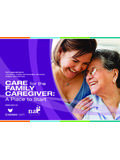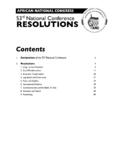Transcription of Herstory of the Battered Women
1 Herstory of the Battered Women 's Movement Year Event 1200 Wife beating is common in Europe and is endorsed by the church as a loving husband's means of correcting his wife's faults. 1600 Battered Women shelters, as we know them today, may not have existed until the nineteenth century, but abused Women in Europe knew where to hide to escape their batterers convents may very well have been the first shelters for Women trying to escape from they violence of their homes. 1767 British Common Law allows for a man to chastise his wife with a stick no greater than the length from the last joint to the end of the thumb (the rule of thumb). 1871 Alabama and Massachusetts declare wife-beating illegal. 1900's Wife beating receives public attention in the United States as it related to the temperance movement, the social purity movement, and the Women 's suffrage movement.
2 1950- Civil rights and ant-war movements challenge the county and lay the foundation for the feminist 1960's movement. 1960's The emergence of the Women 's Rights Movement and societal acknowledgement that Women hold a secondary position to men in society, in the courts and in the home 1968 The Women 's History Library is established. Because of the lack of services, the Library becomes an emergency refuge for Battered Women and rape victims. 1970 The first Battered Women 's shelter open in Cheswick, England, by Erin Pizzey. 1971 The first rape crisis center opens in the United States by the Bay Area Women Against Rape. 1973 The first Battered Women 's shelter in the United States open in St. Paul, Minnesota, by the Women 's Advocates. 1974 Casa Myrna Vasquez opens a Latina-run Battered Women 's shelter in Boston, Massachusetts. It later becomes a technical assistance center.
3 1974 Erin Pizzey, author of the first book about domestic violence from a Battered Women 's perspective, publishes Scream Quietly or the Neighbors Will Hear in England. 1976 The National Organization for Women announces a task force to examine the problem of battering. 1976 Del Martin publishes Battered Wives; the first American feminist publication showing violence against Women is deeply rooted in sexism. 1976 Betsy Warrior publishes Working on Wife Abuse; the first international directory of individuals and groups helping Battered Women . 1976 Nebraska becomes the first state to abolish the marital rape exemption. 1976 Pennsylvania establishes the first state coalition against domestic violence and become the first states to pass legislation providing for orders of protection for Battered Women . 1976 Oregon becomes the first state to legislate mandated arrest in domestic violence cases.
4 1977 The united States Commission on Civil Rights sponsors the Consultation on Battered Women : Issues of Public Policy in Washington DC. Over 100 nationally represented Women come together to organize around the needs of the newly formed Battered Women 's movement. 1977 The United States Commission on Civil Rights sponsors the Consultation on Battered Women : Issues of Public Policy in Washington DC. Over 100 nationally represented Women come together to organize around the needs of the newly formed Battered Women 's movement. 1977 The National Coalition Against Domestic Violence (NCADV) is formed during the US Commission on Civil Rights hearing. However, feminists did much of the groundwork and careful organizing across the country; specifically, Betsy Warrior and Valle Jones. Incorporation papers for NCADV are filed in Portland, Oregon. 1977 The Lesbian Task Force is founded and officially recognized by NCADV.
5 1977 White Buffalo Calf Woman's Society opens the first tribal shelter on the Rosebud Reservation of the Sicangu Lakota Nation in South Dakota. 1977 Matilda Tillie Blackbear, a founding mother of NCADV, South Dakota Coalition Against Domestic Violence and White Buffalo Calf Woman's Society Shelter, becomes the firs woman of color to chair a national domestic violence or Women 's organization as co-chair of NCADV. 1977 Laura X begins the work of the National Clearinghouse on Marital Rape by assisting a rape crisis center in Salem, Oregon, with the trial of John Rideout the first US husband tried for a rape he committed on his wife, Greta, while they were living together. He was acquitted, and then publicly apologized. 1977 Minnesota becomes the first state to allow probable cause arrest (without a warrant) in cases of domestic assault. 1977 Law Enforcement Assistance Administration (predecessor to the Office of Justice Programs by the US.)
6 Department of Justice) awards 11 grants to family violence projects for services. 1979 Over 250 shelters for Battered Women exist in the United States. 1980 The first NCADV National Conference is held in Washington, DC, and attended by more than 600. Women from 49 states. The conference gains federal recognition of critical issues facing Battered Women . 1980 The Third World Caucus is formed at the NCADV Conference in response to racism within the Battered Women 's Movement. It is later renamed as the Women of Color Task Force. 1980 The Rural Task Force is formed at the NCADV steering committee meeting to represent the diverse voices of Battered Women , their children and their advocates who live and work in rural areas. 1980 Joanne Schulman's research shows that marital rape is legal in 44 states, cohabitant rape in 13. states and date rape in 5 states. 1981 The NCADV declares a National Day of Unity on the first Monday in October to connect Battered Women 's advocated who are working to end violence against Women and their children across the nation.
7 1981 Everywoman's Shelter in Los Angeles, California, is the first shelter for Asian Women to open in the United States. 1981 There are nearly 500 Battered Women 's shelters in the United States. 1982 The second NCADV National Conference is held in Milwaukee, Wisconsin, and questions of race, class and sexual preference forms its central theme. The first Women of Color Institute is featured at this conference. 1982 The Battered /Formerly Battered Women 's Task Force is formed at the NCADV Conference to ensure continued leadership by survivors in the Battered Women 's Movement. 1982 The NCADV Child Advocacy Task Force organizes. 1982 Susan Schechter published Women & Male Violence: The Visions and Struggles of the Battered Women 's Movement. 1982 A Place To Go airs on 60 Minutes and describes the work of Battered Women 's shelters in Austin, Texas. It was reported that more viewers watched this program than any other during this television season.
8 1983 Over 700 shelters for Battered Women are in operation across the United States serving 91,000. Women and 131,000 children. 1984 The first National Shelter Directory is published by NCADV. 1984 The Duluth Project is formed in Duluth, Minnesota, to develop a coordinated criminal justice response to domestic violence. 1984 Florida becomes the first state to enact legislation mandating consideration of spouse abuse in child custody determinations. 1984 The US Attorney General establishes a Task Force on family violence and conduct hearings throughout the country to examine the scope and nature of the problem. The report spurs Congress to pass the Family Violence Prevention Services Act the first time federal funds are specifically designated for programs serving Battered Women and their children. 1985 Tracey Thurman versus the City of Torrington, Connecticut, becomes the first cases heard in federal court of a woman suing city police for having failed to protect her from her husband's violence which permanently scarred and partially paralyzed her.
9 She is awarded 2 million dollar judgment. 1985 The first book about African American Women and abuse is published by Evelyn White entitled Chain, Chain Change: For Black Women Dealing with Physical and Emotional Abuse. 1985 The US Surgeon General issues a report identifying domestic violence as a major health problem for Women . 1986 Battered Women 's shelters house over 310,000 Women and children. 1986 NCADV publishes the revised National Directory of Domestic Violence Programs: A guide to Community Shelter, Safe Homes and Service Programs. 1986 The third NCADV National Conference is held in St. Louis, Missouri. 1986 The NCADV returns a grant awarded to them by the US Department of Justice (DOJ) is protest of DOJ's mandate that the term Battered people be used in place of Battered Women in publications paid for with federal dollars, and that all references to lesbian battering be removed.
10 1986 The NCADV Lesbian Task Force publishes Naming the Violence: Speaking out About Lesbian Abuse. 1987 The National Woman Abuse Prevention Project forms as an alternative national organization to accept and carry out the work of the DOJ grant previously refused by the NCADV. 1987 The first Domestic Violence Awareness Month is held in October. 1987 The Power and Control Wheel is published by Ellen Pence in Duluth, Minnesota. 1987 With funds from the Johnson & Johnson Corporation and a national fundraising effort called Shelter Aid, the NCADV establishes the first national toll-free domestic violence hotline. 1988 Due to a commitment against apartheid, the NCADV returns the funding to Johnson & Johnson who maintained investments in South Africa. The operation of the national hotline is then transferred to the Michigan Coalition Against Domestic Violence while other funding was sought.


